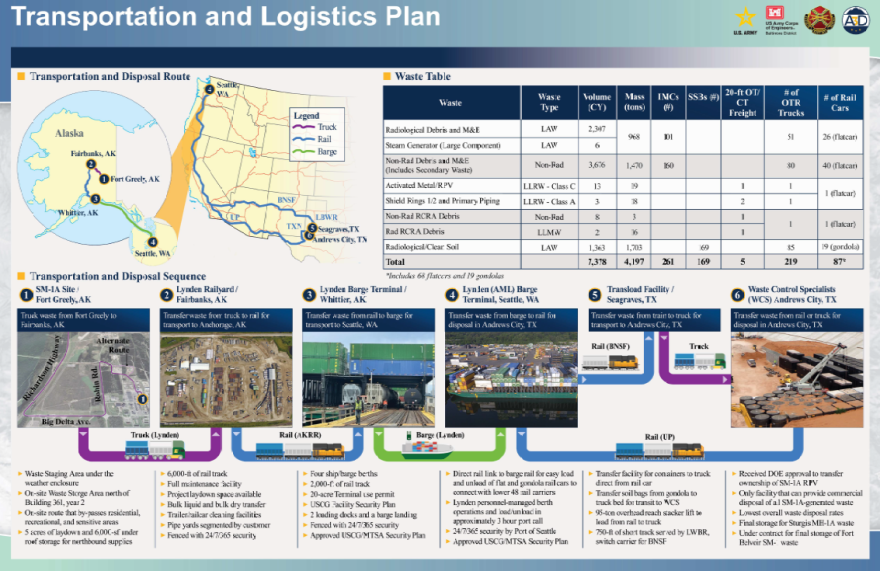Contractor to tear down outbuilding while workers build waste-storage site, erect weather-enclosure structures
Demolition will begin next month on an old outbuilding near the mothballed nuclear power plant on Fort Greely that was shut down more than 50 years ago. Dismantling work on the plant itself is expected to begin in the fall of 2025.
A team of experts from the Army’s nuclear regulatory agency wrapped-up a visit last week to the SM-1A power plant, and the project manager expects to get the go-ahead from them soon on the site’s first demolition project.

“The Army Reactor Office was here, and we spent the entire week performing a readiness review with them to demonstrate that we are ready to implement our decommissioning permit,” Brenda Barber said.
She says that would authorize the team and its contractor to move ahead on decommissioning, which at this stage mainly involves removing radioactive material from the site. They’ll start by demolishing an old Quonset hut that was used to handle and store nuclear waste when the plant was operating from 1962 to 1972, producing electricity and steam heat for the fort.
“So, they have some final reviews to do,” she said, “and we anticipate that on the 7th of October, we are going to formally start decommissioning activities at the site.”
Barber said her team and the contractor have been busy since they arrived in May with preliminary work like environmental and radiological testing. And they’ve built a concrete pad ab out a half-mile north of the plant for a new waste-storage facility. If the reactor office concurs, they’ll erect a tent-like weather enclosure over the storage area made of heavy material stretched over a steel frame that’s now stored at engineering firm in Delta Junction.

“So, we are beginning to move all the structural weather-enclosure members onto Fort Greely, so that we can start construction of that weather enclosure,” she said. “We're hopeful that's going to start in the next two to three weeks.”
“The Army Reactor Office was here, and we spent the entire week performing a readiness review with them to demonstrate that we are ready to implement our decommissioning permit,” Brenda Barber said.
Once it’s completed, construction debris from power plant will be taken to the storage area, beginning in January. The pace will pick up after a larger weather-enclosure structure is built over the power plant itself, to enable the contractor -- Louisiana-based Aptim-Amentum Alaska Decommissioning, also known as A3D -- to work year-round.
But before work on the plant can begin in earnest, workers must tear down a wood-frame façade that was built over the vapor containment structure in the 1960s, apparently for aesthetic reasons.

“The architects and design engineers didn't like the just steel dome that was part of the original design. So they did put the wood façade on the facility so that the base had some consistent architectural features and looks for that time period.”
Barber says once the façade is removed, work will begin on erecting the larger weather enclosure next summer.
“We'll start construction in late June, early July, and we anticipate that it'll be weathered-in by October of next year.”
Once the enclosure is completed around October of next year, the pace of demolition work will ramp up, and so will the number of truckloads hauling the construction debris to Fairbanks -- up to twice a week. The material will then be transferred onto Alaska Railroad cars in Fairbanks and transported to Anchorage or Whittier and barged to Seattle, offloaded onto railcars and taken to a nuclear waste-storage facility in Texas.
Barber says all that will be done according to strict federal safety regulations.
The demolition work on the $99.5 million project is expected to be completed in five years.



